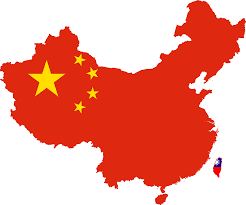While most investors have watched Beijing’s broad policy signals for signs of support, recent shifts in sectors often overlooked have quietly reshaped sentiment and opened fresh angles for allocation.
The latest advance in mainland equities has come against a backdrop of unexpectedly potent drivers, where traditional cyclical plays have been outpaced by the emergence of strategically vital industries. On Monday, the Shanghai Composite edged to roughly 3,560, marking its strongest closing since early 2022, and the blue-chip CSI300 index also gained about 0.7%. Underpinning this improvement has been a surge in the construction and engineering segment, which rallied over 4% after national authorities broke ground on a $170 billion hydropower dam in Tibet. Such a project not only signals a renewed emphasis on infrastructure but also hints at a broader willingness by policymakers to underwrite growth momentum precisely where concerns had begun to mount over labour-market slack. Concurrently, Beijing’s discreet initiation of 2025 rare-earth mining and smelting quotas propelled the materials complex higher by more than 3%. In doing so, it has drawn attention to the long-term strategic value of minerals that underpin everything from electric vehicles to defence systems, reminding investors that policy can swiftly recalibrate supply-demand forecasts in sectors that have languished under the radar.
In Hong Kong, optimism has followed suit. The Hang Seng Index briefly topped the 25,000 threshold for the first time since early 2022, buoyed by a rebound among major internet platform stocks after a government intervention designed to temper cut-throat price wars. Meituan, JD.com and Alibaba all rose by north of 1.5% as authorities urged an end to unsustainable subsidies, a move observers have dubbed an “anti-involution” campaign. Rather than signalling restraint, this approach is being interpreted as a targeted effort to stabilise earnings prospects and shore up margins in the region’s most visible growth engines. Such an outcome underlines a theme that has quietly taken hold: policy tweaks need not be broad-based stimulus to matter. Instead, well-calibrated measures aimed at disorderly competition can deliver disproportionately positive effects on market sentiment, helping to tilt the risk-reward calculus in favour of investors willing to embrace selectivity over blanket exposure.
Looking ahead, the prospects for China’s equities hinge on two intertwined vectors: the pace of follow-through on strategic infrastructure investment and the evolution of regulatory fine-tuning. Although major stimulus packages of the past may be off the table, the imminence of a July Politburo meeting suggests further clarity on economic policies for the second half of the year.
Fidelity China Special Situations PLC (LON:FCSS), the UK’s largest China Investment Trust, capitalises on Fidelity’s extensive, locally-based analyst team to find attractive opportunities in a market too big to ignore.











































